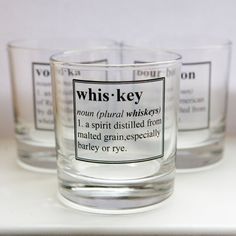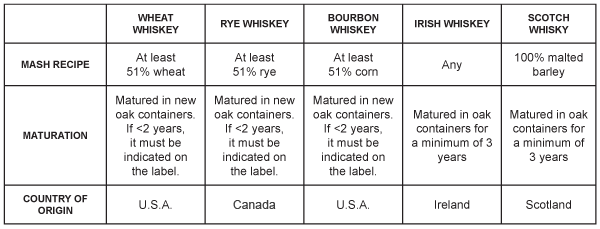So what determines what whisk(e)y is anyway?
Government laws and regulations do. They have changed over the years, but as whiskey becomes a larger contributor to government budgets (through taxes) the government tends to take a larger interest. It is no great surprise that the government would take such an interest. Before Prohibition in the United States, taxes on whiskey alone accounted for 1/2 of national revenue! (There is an argument to be made that Prohibition caused the Great Depression…) Keeping your “native spirit” under domestic control is important not only to maintain its integrity, but also to maintain its tax contributions.
There are so many differences in laws relating to whiskey that the only real connection that whiskey has throughout the world is that it is a distilled spirit-most of the time it is made from grain, but some have called distilled molasses product whiskey as well. This discrepancy is in large part why countries with “native spirits” like scotch, cognac, and bourbon have described in detail what makes their distilled product unique to their country if origin. As cognac is made from grapes, I will focus on scotch and bourbon-both whiskeys distilled from grain.
As I’ve said, laws regulating alcohol have been tweaked and changed over the years, but the ones that are in place now were made fairly recently. The Scotch Whisky Association (SWA) is a non-profit organization based in Edinburgh that can trace their roots back to the early 20th century. They have taken on the task of controlling how scotch is perceived by the rest of the world- they promote, protect and represent the interests of about 95% of all scotch producers. In 2009, the Scotch Whisky Act (1988) was replaced by Scotch Whiskey Regulations. This new statute would cover more than just production as the previous had done. It would govern labeling, packaging, and advertising as well. These are those rules:
- Produced at a distillery in Scotland from water and malted barley (to which only whole grains of other cereals may be added) all of which have been:
- Processed at that distillery into a mash
- Converted at that distillery to a fermentable substrate only by endogenous enzyme systems
- Fermented at that distillery only by adding yeast
- Distilled at an alcoholic strength by volume of less than 94.8% (190 US proof)
- Wholly matured in an excise warehouse in Scotland in oak casks of a capacity not exceeding 700 litres (185 US gal; 154 imp gal) for at least three years
- Retaining the colour, aroma, and taste of the raw materials used in, and the method of, its production and maturation
- Containing no added substances, other than water and plain (E150A) caramel colouring
- Comprising a minimum alcoholic strength by volume of 40% (80 US proof)
In America, whiskey’s governing force is the TTB (Alcohol and Tobacco Tax and Trade Bureau). In 2003, the Homeland Security Act formed this organization by splitting up the responsibilities of the ATF (Alcohol, Tobacco, Firearms and Explosives). The TTB would become part of the treasury with some of its duties being passed to the Dept. of Justice. Enforcement would be handled by the ATF. The TTB’s job is to protect revenue and investigate non-compliance as well as monitor the industry. It’s kind of like the “IRS of the whiskey industry.” Their laws are as follows: (note that our government spells whiskey without the “e”)
Whiskey is defined as-
Spirits distilled from a fermented mash of grain at less than 95% alcohol by volume (190 proof) having the taste, aroma and characteristics generally attributed to whisky and bottled at not less than 40% alcohol by volume (80 proof)
Bourbon is defined as-
Whisky produced in the U.S. at not exceeding 80% alcohol by volume (160 proof) from a fermented mash of not less than 51 percent corn and stored at not more than 62.5% alcohol by volume (125 proof) in charred new oak containers
Straight bourbon whiskey is defined as-·
Bourbon whisky stored in charred new oak containers for 2 years or more
“Straight Bourbon Whisky” may include mixtures of two or more straight bourbon whiskies provided all of the whiskies are produced in the same state
Blended bourbon whiskey or Bourbon whiskey-a blend is defined as-
Blended whisky produced in the U.S. containing not less than 51% on a proof gallon basis (excluding alcohol derived from added harmless coloring, flavoring or blending materials*) straight bourbon whisky
Notice that bourbon, specifically, cannot be distilled beyond 160 proof, whereas whiskey can be distilled up to 190 proof. It has no requirement for aging like scotch whisky does. If it is designated straight bourbon, it may not have coloring or additives and must be at least 2 years old, but a blend or any whiskey not labeled straight has no such distinction.



